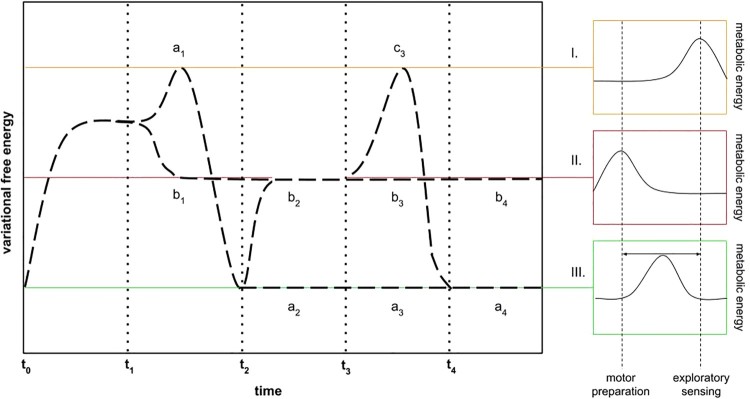Figure 2.
Variational free energy and metabolism in health and with PTSD impairment. (I) Threat or safety undetermined (high uncertainty average, high variance / exploratory sensing, i.e., environment-centric attention). (II) Threat determined (low uncertainty average, low variance / motor preparation, i.e., ego-centric attention). (III) Safety determined (low uncertainty average, high variance / dynamic attentional allocation). The dotted line at t0–t1 depicts initial surprisal by a high-energy auditory stimulus outside of foveal range. A healthy individual may engage in exploratory sensing (a1) with momentary high uncertainty, and obtain fine-grained stimulus information at t2. If no threat is detected, a safety condition with low uncertainty is designated, with fluid, flexible, reality testing, as self-evidencing environment-body-brain dynamics (see Figure 1a), continuing in a2-4. If a threat is detected, metabolic resources are directed away from exploratory sensing toward motor preparation (b2), with intermittent exploratory sensing to ascertain if the threat is no longer present (c3), in which case, a4 is reached. Most of the same line may be followed if the healthy person immediately classes the ambiguous stimulus as a threat (b1), continuing as with the previous case to b2, c3, and a4. In contrast, PTSD impairs both the a1 and c3 trajectories, such that the surprising stimulus is disproportionately classed as a threat (b1), and further exploratory sensing is not permitted to escape the threat condition in b2, continuing instead to b3–4 (see Figure 1c).

